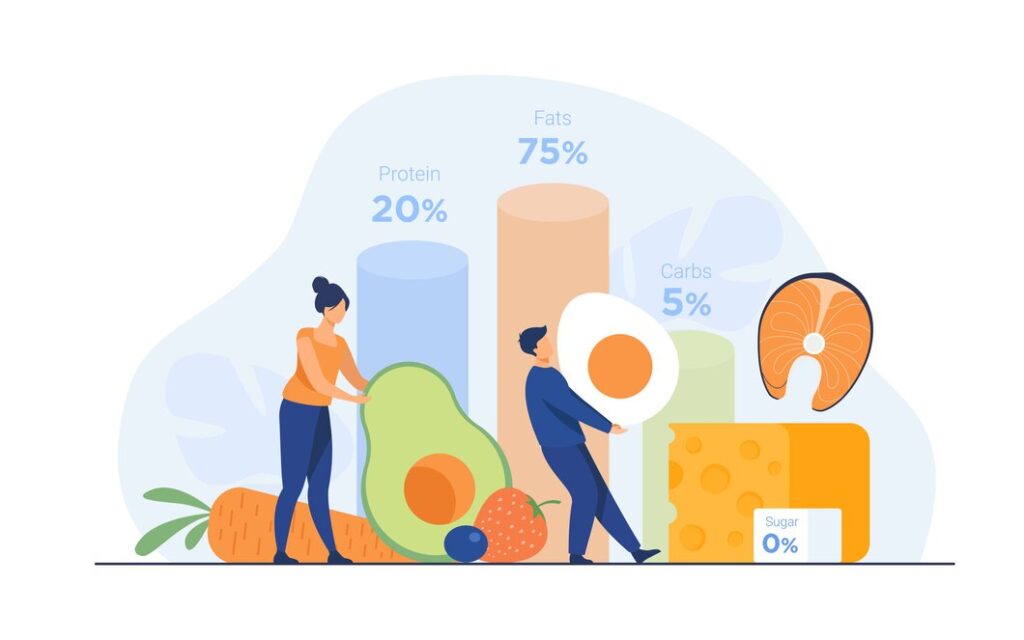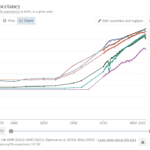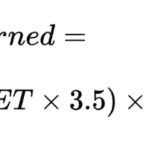New BMI Calculator: Accurate & Research-Based
BMI calculation is a universal weight management tool used to determine if someone is at a healthy weight according to their height. Although simple to compute, it may reflect some health risks and point one in the right direction for more information to help them make informed decisions about their lifestyle and overall health. Our New BMI Calculator has various improvements as it accommodates age and gender based on latest research published on Body Mass Index.
Improved BMI Calculator
How to Calculate BMI?
Body Mass Index (BMI) is a repeatedly used tool to find if a person’s weight is in a healthy weight range. It’s a simple formula that can help you understand your weight status, but it’s important to know that it doesn’t account for muscle mass or fat distribution. Let’s dive deeper into how BMI is calculated, and explore some variations like the New BMI, BMI Prime, and the Corpulence Index.

The New BMI (Power 2.5)
The New BMI formula adjusts the exponent in height to 2.5, providing more accurate assessments for individuals at extreme heights. This refinement improves results for those who are shorter or taller than average. Use a New BMI Calculator to get precise insights tailored to your body proportions.

BMI Prime
BMI Prime normalizes BMI by dividing the calculated BMI by the upper limit of the healthy range (usually 25). For example, a BMI of 22.86 would yield a BMI Prime of 0.91. Values below 1 indicate a healthy weight, while those above suggest overweight or obesity.
BMI Prime = BMI / 25
Corpulence Index
The Corpulence Index uses cube height instead of squared height, offering another perspective on body mass. It’s less common but used in specialized Body Index Calculators for detailed analysis. For quick assessments, tools like the New Body Mass Ratio calculator or a visual BMI chart are invaluable. Modern calculators now incorporate these variations to provide a more personalized understanding of health.
BMI Categories Explained: Classifications of Body Mass Index

BMI categories help classify your body mass index into specific ranges that indicate your overall health status. These categories allow healthcare professionals to identify potential risks associated with being underweight, overweight, or obesity. Here’s a breakdown of the BMI categories:
| BMI Range | Category | Description |
|---|---|---|
| Below 18.5 | Underweight | Indicates that your weight is too low for your height. Can lead to malnutrition or other health issues. |
| 18.5 – 24.9 | Normal weight | This is the healthy weight range for most adults. It suggests a lower risk of developing health problems. |
| 25 – 29.9 | Overweight | Indicates that you have more weight than what is considered healthy for your height. This can increase the risk of developing heart disease and diabetes. |
| 30 – 34.9 | Obesity (Class 1) | Moderate obesity that can increase the risk of various health conditions, such as high blood pressure, diabetes, and heart disease. |
| 35 and above | Obesity (Class 2 and 3) | Severe obesity that significantly increases the risk of serious health problems like heart disease, stroke, and certain cancers. |
Free Download BMI Chart PDF
The BMI chart is a visual tool that categorizes your Body Mass Index (BMI) into different weight ranges, helping you understand where you stand in terms of overall health. It compares your height and weight to determine whether you fall into one of the above categories.

Is BMI Still Relevant? Discover Advanced Automated Calculators & Trackers for Free!
Why stop at BMI calculation? Get automated macros calculation, BMR, TDEE Calculations, fitness tracking, personalized meals and more in our app. Discover a healthier you today! Start your health journey for free!
FAQ about Body Mass Index –
Are BMI Calculators Accurate?
BMI calculators are widely used for assessing weight status, but they have several limitations. Here are the key points to consider:
- Doesn’t Account for Muscle Mass
- BMI does not differentiate between muscle and fat.
- Muscular individuals may have a higher BMI despite low body fat.
- Doesn’t Consider Body Composition
- BMI does not reflect how fat is distributed across the body.
- It misses crucial details about visceral fat (fat around organs) and overall body fat percentage.
- Not Suitable for All Age Groups
- BMI doesn’t adjust for age-related changes in body composition, such as muscle loss in older adults.
- Different BMI charts are needed for children and teens, as they are still growing.
- Doesn’t Reflect Ethnicity Differences
- BMI may not be accurate for all ethnic groups.
- Some populations (e.g., Asians) may face health risks at lower BMI values than others.
- No Insight into Health Conditions
- BMI does not take into account specific health conditions (e.g., metabolic or hormonal disorders).
- Two individuals with the same BMI may have very different health risks.
BMI For Pregnant women
During pregnancy, weight management is essential to ensure the health of both the mother and the baby. Pre-pregnancy BMI helps determine healthy weight gain targets, which vary based on individual factors.
Read More : BMI for Pregnant Women: What You Need to Know
Pre-Pregnancy BMI and Recommended Weight Gain
A person’s BMI before pregnancy is used to estimate how much weight they should gain during the nine months. Here’s a bmi chart for pregnant women:
| BMI Range | Category | Recommended Weight Gain |
|---|---|---|
| < 18.5 | Underweight | 28–40 lbs (12.5–18 kg) |
| 18.5–24.9 | Normal weight | 25–35 lbs (11.5–16 kg) |
| 25–29.9 | Overweight | 15–25 lbs (7–11.5 kg) |
| ≥ 30 | Obese | 11–20 lbs (5–9 kg) |
Why Monitoring Weight Matters
- Postpartum Recovery: Balanced gain improves the chances of returning to pre-pregnancy weight.
- Fetal Health: Excess weight can lead to delivery complications, while insufficient weight may result in low birth weight.
- Maternal Well-Being: Helps reduce risks of pregnancy-related conditions.
Potential Health Risks Linked to Being Underweight
- Underweight individuals may have weakened immune systems, making them more prone to infections and illnesses.
- Being underweight can lead to nutritional deficiencies, as the body may not be getting enough essential vitamins and minerals.
- Underweight women may experience menstrual irregularities or even stop menstruating altogether.
- Low body weight can put a strain on the heart and negatively impact cardiovascular health.
Risk Factors Linked to Excess Weight
- Increased risk of heart disease and stroke
- Higher likelihood of developing type 2 diabetes
- Joint problems, such as osteoarthritis, can arise
- Factors for heart disease
- Increased risk of certain cancers, such as breast and colon cancer
BMI vs BRI: Understanding the Differences

What is BRI?
BRI, or Body Roundness Index, uses height and waist circumference to provide a more detailed estimation of body fat and visceral fat levels.

Read More : Body Roundness Index : Everthing you need to know!
Key Differences Between BMI and BRI
| Aspect | BMI | BRI |
|---|---|---|
| Inputs Needed | Weight and Height | Waist Circumference and Height |
| Measures | Overall weight status | Fat distribution and visceral fat |
| Accuracy | General estimate, less precise | More accurate for body fat analysis |
| Health Insights | Limited (no fat location consideration) | Better predictor of health risks |
| Ease of Use | Very easy | Slightly more complex |
Which is Better?
- BMI is suitable for quick, general assessments and is widely recognized in health guidelines.
- BRI provides a deeper understanding of fat distribution and health risks, making it more useful for personalized health monitoring.
While BMI remains a popular tool due to its simplicity, BRI addresses many of BMI’s shortcomings by considering waist size and fat distribution. Depending on your health goals and resources, combining both metrics can offer a more comprehensive picture of your health.
Alternatives to BMI
These disadvantages call for alternative methods of providing more comprehensive nature about body composition and health risks:
- Waist-to-Hip Ratio (WHR): This measures the ratio of the waist diameter to the hip diameter. A higher WHR is associated with an increased risk of cardiovascular diseases and type 2 diabetes.
- Waist-to-Height Ratio (WHtR): This is calculated as waist circumference divided by height. A WHtR greater than 0.5 indicates that an individual faces a high risk of diseases associated with obesity.
- Body Fat Percentage: This is the proportion of the body’s weight containing fat. Body fat percentage can be measured using skinfold callipers, bioelectrical impedance analysis, and dual-energy X-ray absorptiometry.
- Skinfold Thickness: Skin fold thickness estimates body fat percentage at various overt body sites.
- Bioelectrical Impedance Analysis (BIA): Estimating body composition through a small electric current running within one’s body system(s) which measures lean mass in resistance to fat mass using this method called BIA stands there for Bio Electrical Impedance Analysis
Conclusion
The modified BMI calculation is a significant improvement over the traditional BMI formula. By incorporating age and gender adjustments, it offers a more accurate and personalized health risk assessment. This method aligns with contemporary research and acknowledges the complexity of human body composition, making it a valuable tool in modern healthcare. Maintaining a balanced diet through good habits will ensure that you have a good BM, you will require constant observation which will enable you to see what works best for you in terms of eating habits.





